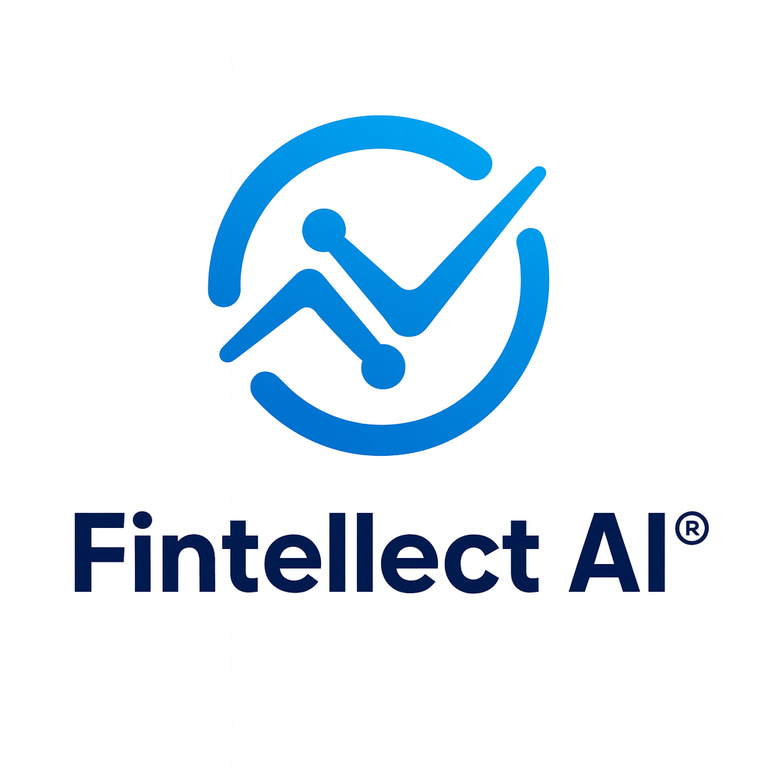The Financial Revolution: Confronting the Fears—Overcoming the Limitations of AI in Finance
Balancing Innovation with Trust in the Age of Intelligent Finance
CFO INSIGHTS
Zhivka Nedyalkova
3/25/20255 min read


Balancing Innovation with Trust in the Age of Intelligent Finance
Over the past three weeks, we explored how AI has transformed financial operations—unlocking new efficiencies, improving decision-making, and surpassing traditional software tools. But even as artificial intelligence reshapes the financial world, one challenge remains deeply rooted: fear.
Not fear of failure or competition, but a more profound kind—fear of the unknown. From ethical dilemmas and transparency concerns to loss of human oversight, skepticism around AI in finance is real and often justified.
According to Deloitte’s 2024 Global AI in Finance Study, a significant portion of finance professionals express hesitation around adopting AI: nearly 45% cite lack of transparency as a top concern, while 36% worry about over-reliance on automation without adequate human oversight. These are not fringe worries—they’re mainstream. And unless they’re addressed, they will hinder the adoption of even the most advanced tools.
So in this final chapter of our series, we go beyond the technology and focus on people—their doubts, concerns, and how to turn skepticism into confidence. Because the future of AI in finance is not just about algorithms—it’s about trust, explainability, and control.
1. Fear of Losing Control: Who’s Really in Charge?
The Concern:
Finance teams fear becoming too dependent on algorithms. What if AI makes a wrong recommendation? Who is accountable?
The Risk:
Blind reliance on AI can create a dangerous illusion of objectivity—especially if users assume the system is always right. This creates risk for compliance, strategic planning, and stakeholder trust.
✅ The Solution:
Enter the concept of Human-in-the-Loop (HITL)—a collaborative approach where AI assists, but does not replace human judgment. In financial operations, this means AI may flag anomalies, suggest forecasts, or highlight budget risks, but the final call always lies with the finance team.
📌 Real-world example: AI models may detect suspicious spending patterns in real time, but the compliance officer reviews and decides whether to escalate it.
Why it works:
HITL ensures human oversight in every critical step, combining AI's speed with human reasoning and experience.
2. Fear of the “Black Box”: I Don’t Know How It Reached That Conclusion
The Concern:
Many professionals hesitate to trust AI because it’s not transparent. They don’t understand how outputs are calculated or why certain recommendations are made.
The Risk:
This lack of interpretability damages trust—especially in a domain like finance where transparency is non-negotiable.
✅ The Solution:
This is where Explainable AI (XAI) comes in. XAI makes AI decisions understandable, traceable, and auditable—even for non-technical users.
📌 Real-world example: Instead of simply flagging a projected cash flow shortage, XAI explains that the prediction is based on increased vendor payments, reduced income from a key client, and seasonal decline.
Why it works:
Explainability bridges the gap between complex algorithms and human users. When finance teams understand how AI works, they are far more likely to trust and act on its insights.
3. Fear of Errors and Bias: Can I Trust the Data?
The Concern:
AI is only as good as the data it’s trained on. If the training data is flawed, biased, or incomplete, AI can produce misleading or even discriminatory outcomes.
The Risk:
In finance, biased models can lead to inaccurate credit scoring, unfair lending decisions, or flawed forecasting—potentially damaging both customer relationships and company credibility.
✅ The Solution:
Modern AI systems must be designed with data governance protocols, bias testing, and audit trails. This ensures that data integrity and diversity are actively monitored.
📌 Real-world example: Before deploying an AI credit scoring tool, financial firms should use bias-detection algorithms to test for disparities based on gender, region, or socioeconomic status.
Why it works:
Mitigating bias isn’t just ethical—it’s financial. Reducing bias leads to better risk predictions and more inclusive, accurate decision-making.
4. Fear of Job Displacement: Will AI Replace Finance Professionals?
The Concern:
A common narrative is that AI will automate jobs, leaving finance professionals behind—or worse, obsolete.
The Risk:
Fear of job loss slows down digital transformation. Employees resist tools that they perceive as threats rather than support systems.
✅ The Solution:
AI is not here to replace—it’s here to augment. By automating repetitive tasks like invoice processing or cash flow forecasting, AI frees professionals to focus on higher-value activities like strategic planning, risk analysis, and client relations.
Moreover, the rise of AI in finance is creating entirely new career paths, including:
AI Finance Integrator
Finance Data Analyst with AI specialization
AI Product Manager (Finance Sector)
AI Governance & Risk Compliance Lead
Finance-AI Ethics Officer
AI Compliance & Regulatory Specialist
AI Ethics & Regulation Consultant
Financial AI Coach & Trainer
Algorithmic Audit Analyst
Human-AI Collaboration Strategist
📌 Real-world example: A finance team member may become a “Financial AI Analyst” who interprets model outputs, checks for anomalies, and liaises with engineering and compliance.
Why it works:
These roles combine domain expertise with AI fluency—turning traditional finance teams into AI-literate innovation hubs. AI is not eliminating financial jobs—it’s transforming them.
5. Fear of Regulatory and Compliance Risks: Will AI Put Me at Legal Risk?
The Concern:
In highly regulated industries, finance leaders worry that AI decisions may violate accounting standards, tax laws, or GDPR regulations, especially when automation happens behind the scenes.
The Risk:
Unexplainable or unverifiable financial decisions can lead to audit failures, reputational damage, or regulatory penalties.
✅ The Solution:
Regulatory-safe AI platforms are built with auditability, documentation, and compliance rules baked into their architecture. XAI plays a critical role, but it’s just one part of a broader framework—Trustworthy AI.
Trustworthy AI encompasses:
Fairness (bias detection and mitigation)
Transparency (XAI)
Security (data encryption and protection)
Governance (clear accountability frameworks)
Reliability (robust testing across edge cases)
Human agency and oversight
📌 Real-world example: AI-generated reports can include automated documentation logs showing what data was used, how it was analyzed, and who validated the outcome.
Why it works:
Trustworthy AI ensures that systems are not only functional but auditable, fair, and aligned with legal requirements—building trust across the entire ecosystem.
6. Fear of Over-Reliance: What If the System Fails?
The Concern:
AI systems may deliver highly accurate outputs—until they don’t. What happens if the system crashes, misinterprets a trend, or is fed bad data?
The Risk:
Over-reliance on AI without contingency planning can create blind spots, causing significant financial disruptions.
✅ The Solution:
AI implementation should follow a hybrid model: AI handles the heavy lifting, while human experts validate and fine-tune outputs. Fallback mechanisms, manual override protocols, and regular stress testing should be standard practice.
📌 Real-world example: If an AI forecasting tool identifies an unusually sharp revenue drop, human analysts are alerted and encouraged to cross-check with contextual market data before taking action.
Why it works:
AI doesn't replace human intuition—it enhances it. The best systems build in fail-safes and human intervention points to ensure resilience.
Rethinking Innovation: It Starts with Trust
AI is transforming finance, but no amount of automation will succeed unless people trust the system behind it. The fears surrounding AI are not irrational—they’re a natural response to rapid change in a high-stakes industry.
The future of AI in finance must be built on three pillars:
🔹 Transparency through Explainable AI (XAI)
🔹 Collaboration through Human-in-the-Loop systems
🔹 Governance through Trustworthy AI frameworks
By addressing human concerns—openly, empathetically, and proactively—finance leaders can unlock the full power of AI without sacrificing control, compliance, or integrity.
📌 Next week, we close our series with a forward-looking perspective: What’s next for AI in finance—and how will the relationship between humans and machines evolve over the next decade? Stay tuned.
